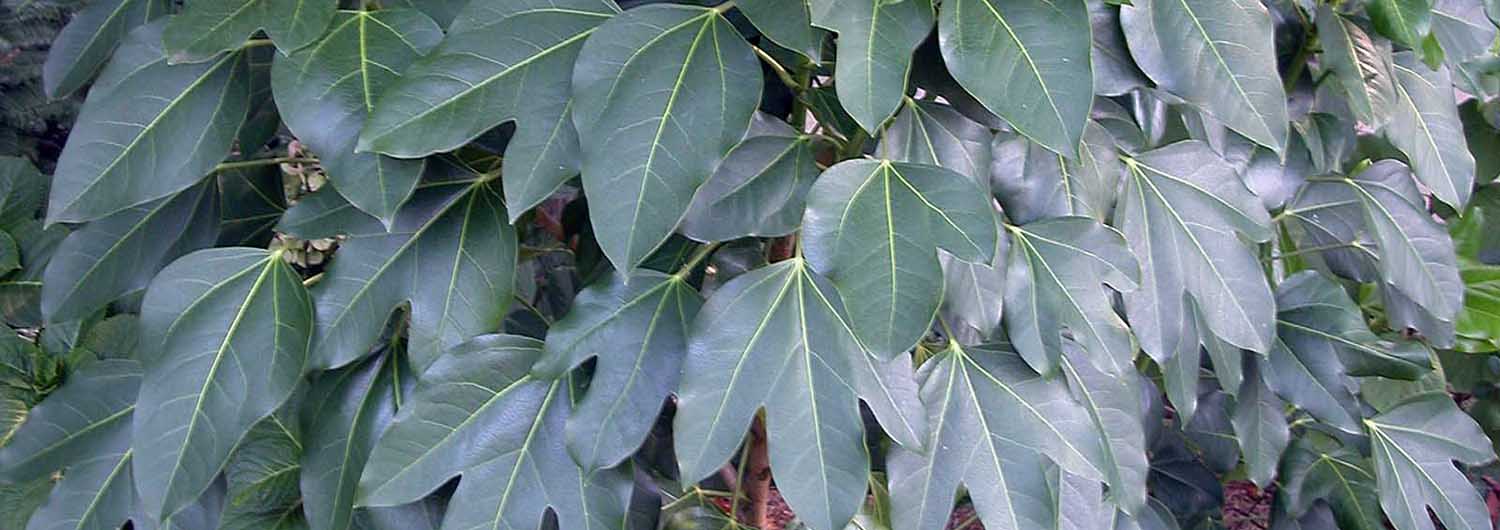Dendropanax trifidus
tree ivy
Among the many overlooked evergreen shrubs for the Southeast, perhaps none is as woefully underused as Dendropanax trifidus, the tree ivy. Although related to the true ivies, this shrub or small tree forms a distinctive oval headed plant that fits into almost any landscape from a traditional southern garden to a tropical themed paradise and even has a place in a formal landscape where its symmetrical head and dark glossy evergreen foliage holds its own against more traditional boxwoods.
The genus Dendropanax is a widespread group ranging from Central and South America to Asia and occurring mainly in wet tropical regions. Few species are grown as horticultural specimens besides the Japanese D. trifidus which is highly prized in its native country and by plantsmen throughout the warm temperate areas of the world.
In the landscape, D. trifidus prefers some shade but will tolerate full sun. It makes a lush specimen when grown in rich soils and given plenty of moisture during the summer but it is surprisingly tough and can tolerate less than ideal conditions very well once established. The plant is typically grown as a single stem specimen but usually is allowed to branch low to form a small tree or medium-sized shrub generally 8'–15' tall and half as wide. Young plants bear large, three-lobed leaves of deep, glossy green although the foliage will be somewhat smaller and lighter green in sunny conditions. With maturity, the foliage eventually will lose its lobing and become oval to rhomboid in shape. The flowers are held in rounded clusters like its relative, Japanese fatsia. In the winter, the foliage often takes on deep burgundy tones which are quite beautiful.
The JC Raulston Arboretum has grown this plant for quite a while and found it to be an easy-going garden resident. One large specimen was lost during the 2007 drought, after performing well for about 20 years, when it did not receive any supplemental water over the entire summer illustrating the need for some care during dry periods. Another plant now grows in the Asian Valley where it shines during the winter months when the herbaceous and deciduous material take a back seat.

